
The history of Guernsey stretches back to evidence of prehistoric habitation and settlement and encompasses the development of its modern society.

Jersey – the largest of the Channel Islands – has been an island for around 6,000 years. Early inhabitation is evidenced by various neolithic monuments and hoards. In the 10th century, Jersey became part of Normandy. When the Normans conquered England in 11th century, Jersey remained a part of the Duchy of Normandy, but when Normandy and England were finally split in the 13th century, the Channel Islands remained loyal to the English Crown, splitting Jersey politically from mainland Normandy.

The Battle of Sluys, also called the Battle of l'Écluse, was a naval battle fought on 24 June 1340 between England and France. It took place in the roadstead of the port of Sluys, on a since silted-up inlet between Zeeland and West Flanders. The English fleet of 120–150 ships was led by Edward III of England and the 230-strong French fleet by the Breton knight Hugues Quiéret, Admiral of France, and Nicolas Béhuchet, Constable of France. The battle was one of the opening engagements of the Hundred Years' War.

The first phase of the Hundred Years' War between France and England lasted from 1337 to 1360. It is sometimes referred to as the Edwardian War because it was initiated by King Edward III of England, who claimed the French throne in defiance of King Philip VI of France. The dynastic conflict was caused by disputes over the French feudal sovereignty over Aquitaine and the English claims over the French royal title. The Kingdom of England and its allies dominated this phase of the war.

The Battle of Winchelsea or the Battle of Les Espagnols sur Mer was a naval battle that took place on 29 August 1350 as part of the Hundred Years' War between England and France. It was a victory for an English fleet of 50 ships, commanded by King Edward III, over a Castilian fleet of 47 larger vessels, commanded by Charles de la Cerda. Between 14 and 26 Castilian ships were captured, and several were sunk. Only two English vessels are known to have been sunk, but there was a significant loss of life.
Sir Renaud (Reginald)de Carteret,8th Seigneur of Saint Ouen (1316–1382) was a Seigneur of Saint Ouen in Jersey.
The battle of Brest, sometimes called the battle of the River Penfeld, was an action in 1342 between an English squadron of converted merchant ships and that of a mercenary galley force from Genoa fighting for the Franco-Breton faction of Charles of Blois during the Breton War of Succession, a side conflict of the Hundred Years War.
Events from the 1330s in England.

Holmes's Bonfire was a raid on the Vlie estuary in the Netherlands, executed by the English Fleet during the Second Anglo-Dutch War on 19 and 20 August 1666 New Style. The attack, named after the commander of the landing force, Rear-Admiral Robert Holmes, was successful in destroying by fire a large merchant fleet of 140 ships. During the same action, the town of West-Terschelling was burnt down, which caused outrage in the Dutch Republic.

The Battle of Arnemuiden was a naval battle fought on 23 September 1338 at the start of the Hundred Years' War between England and France. It was the first naval battle of the Hundred Years' War and the first recorded European naval battle using artillery, as the English ship Christopher had three cannons and one hand gun.
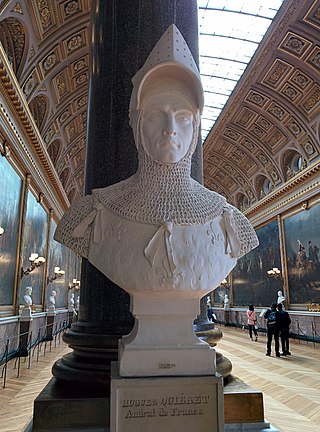
Hugues Quiéret was a French nobleman, admiral and military commander. He was a knight, lord of Tours-en-Vimeu and of Hamicourt, both in Picardy. Before becoming an admiral, he was an advisor, Chamberlain, Grand Master of France, then the seneschal of Beaucaire and Nimes from 1325 to 1332.

Nicolas Béhuchet, also known as Colin Béhuchet, was a French admiral and financier. Together with Hugues Quiéret, he commanded the French fleet during the early phases of the Hundred Years' War. At the battle of Arnemuiden in 1338, Béhuchet ordered the English prisoners massacred. The following years, he and Quiéret fought the English in the Channel. Two years after Arnemuiden, the French fleet was anchored at Sluys in preparation of an invasion of England. The fleet was attacked by Edward III's English fleet and was destroyed in the battle of Sluys. After this defeat, the captured Béhuchet was hanged as a revenge for the massacre at Arnemuiden.
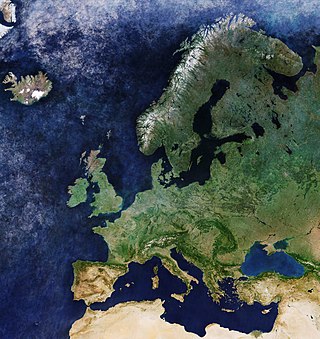
Invasions of the British Isles have occurred throughout history. Various sovereign states within the territorial space that constitutes the British Isles have been invaded several times, including by the Romans, by the Germanic peoples, by the Vikings, by the Normans, by the French, and by the Dutch.
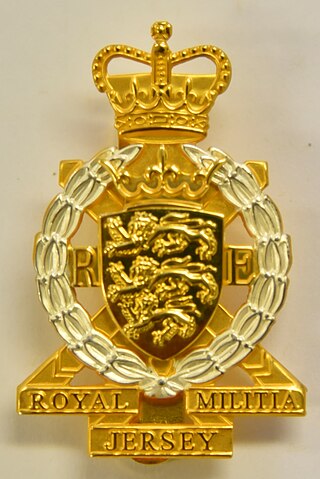
Formed in 1337, the Royal Militia of the Island of Jersey can claim to be the oldest sub-unit of the British Army, although, because it is not a regiment, and was disbanded for decades in the late 20th century, it is not the most senior.
The term Invasion of England may refer to the following planned or actual invasions of what is now modern England, successful or otherwise.

The Royal Guernsey Militia has a history dating back 800 years. Always loyal to the British Crown, the men were unpaid volunteers whose wish was to defend the Island of Guernsey from foreign invaders.
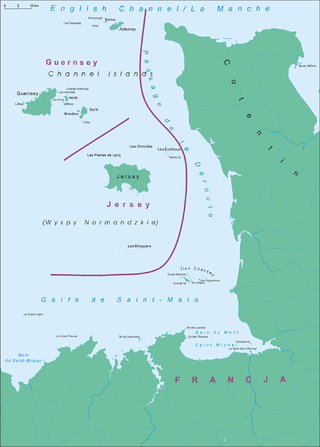
The Channel Islands are a group of islands off the coast of France. The largest island is Jersey, followed by Guernsey, Alderney, Sark, and a number of smaller islands, islets and rocky outcrops. The islands were separated from mainland Europe with rising sea levels in the Neolithic period; thereafter maritime activity commenced.
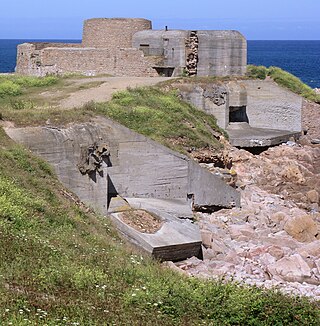
The island of Guernsey has been fortified for several thousand years, the number of defence locations and complexity of the defence increasing with time, manpower and the improvements in weapons and tactics.

The Crécy campaign was a series of large-scale raids (chevauchées) conducted by the Kingdom of England throughout northern France in 1346 that devastated the French countryside on a wide front, culminating in the Battle of Crécy. The campaign was part of the Hundred Years' War.

The official history of the Royal Navy began with the establishment of the Navy Royal by Henry VIII in 1546. The modern incarnation of the institution re-emerged as the national naval force of the Kingdom of England in 1660, following the Restoration of King Charles II to the throne. However, for more than a thousand years before that there had been English naval forces varying in type and organization. In 1707 it became the naval force of the Kingdom of Great Britain after the Union between England and Scotland which merged the English navy with the much smaller Royal Scots Navy, although the two had begun operating together from the time of the Union of the Crowns in 1603.














